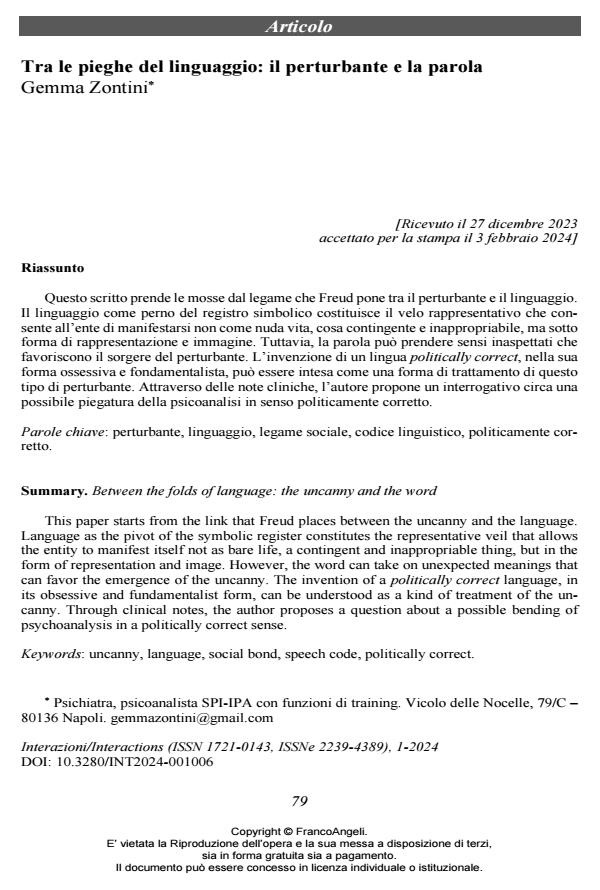Tra le pieghe del linguaggio: il perturbante e la parola
Titolo Rivista INTERAZIONI
Autori/Curatori Gemma Zontini
Anno di pubblicazione 2024 Fascicolo 2024/1
Lingua Italiano Numero pagine 15 P. 79-93 Dimensione file 180 KB
DOI 10.3280/INT2024-001006
Il DOI è il codice a barre della proprietà intellettuale: per saperne di più
clicca qui
Qui sotto puoi vedere in anteprima la prima pagina di questo articolo.
Se questo articolo ti interessa, lo puoi acquistare (e scaricare in formato pdf) seguendo le facili indicazioni per acquistare il download credit. Acquista Download Credits per scaricare questo Articolo in formato PDF

FrancoAngeli è membro della Publishers International Linking Association, Inc (PILA)associazione indipendente e non profit per facilitare (attraverso i servizi tecnologici implementati da CrossRef.org) l’accesso degli studiosi ai contenuti digitali nelle pubblicazioni professionali e scientifiche
Questo scritto prende le mosse dal legame che Freud pone tra il perturbante e il linguaggio. Il linguaggio come perno del registro simbolico costituisce il velo rappresentativo che consente all’ente di manifestarsi non come nuda vita, cosa contingente e inappropriabile, ma sotto forma di rappresentazione e immagine. Tuttavia, la parola può prendere sensi inaspettati che favori-scono il sorgere del perturbante. L’invenzione di un lingua politically correct, nella sua forma ossessiva e fondamentalista, può essere intesa come una forma di trattamento di questo tipo di perturbante. Attraverso delle note cliniche, l’autore propone un interrogativo circa una possibi-le piegatura della psicoanalisi in senso politicamente corretto.
Parole chiave:perturbante, linguaggio, legame sociale, codice linguistico, politicamente corretto.
Gemma Zontini, Tra le pieghe del linguaggio: il perturbante e la parola in "INTERAZIONI" 1/2024, pp 79-93, DOI: 10.3280/INT2024-001006